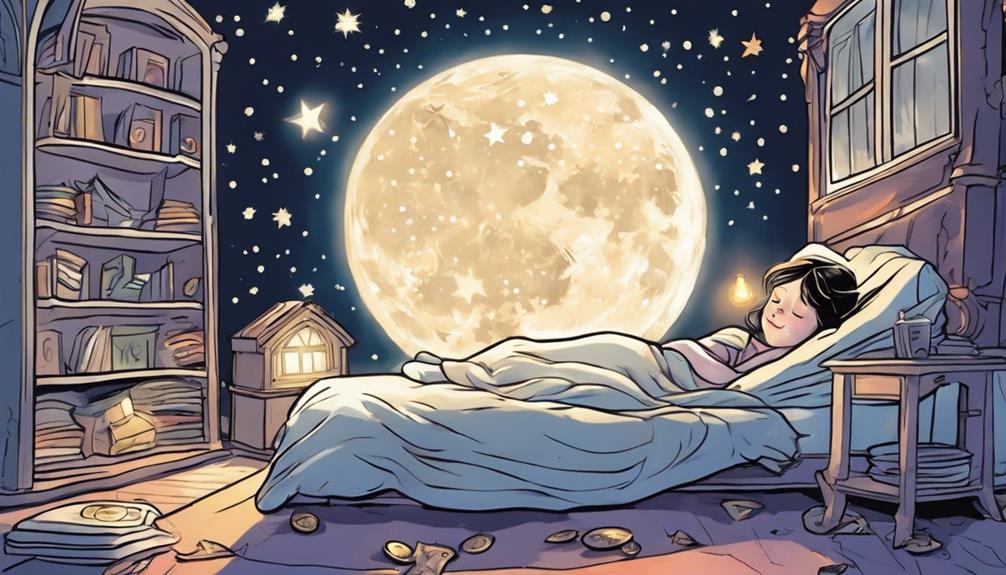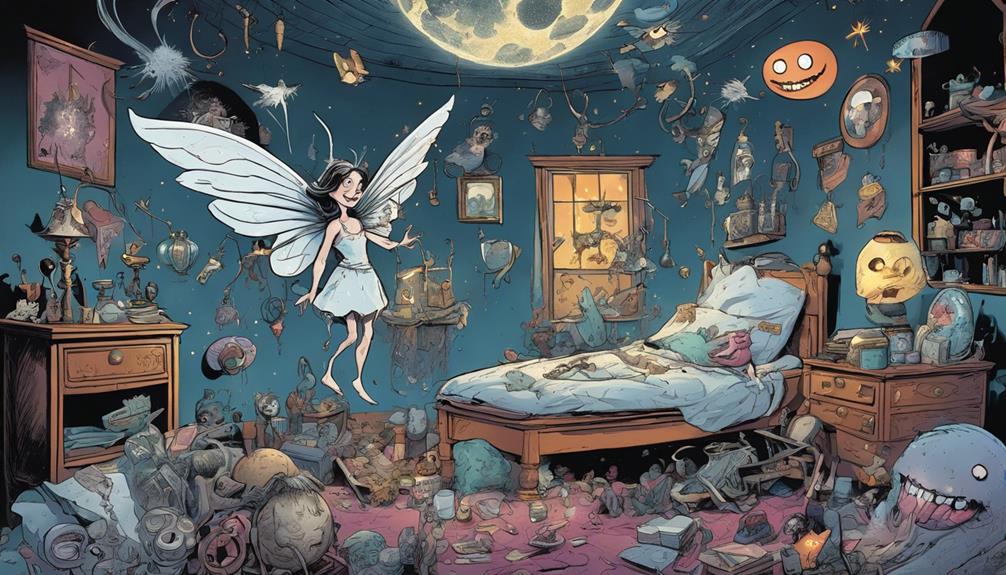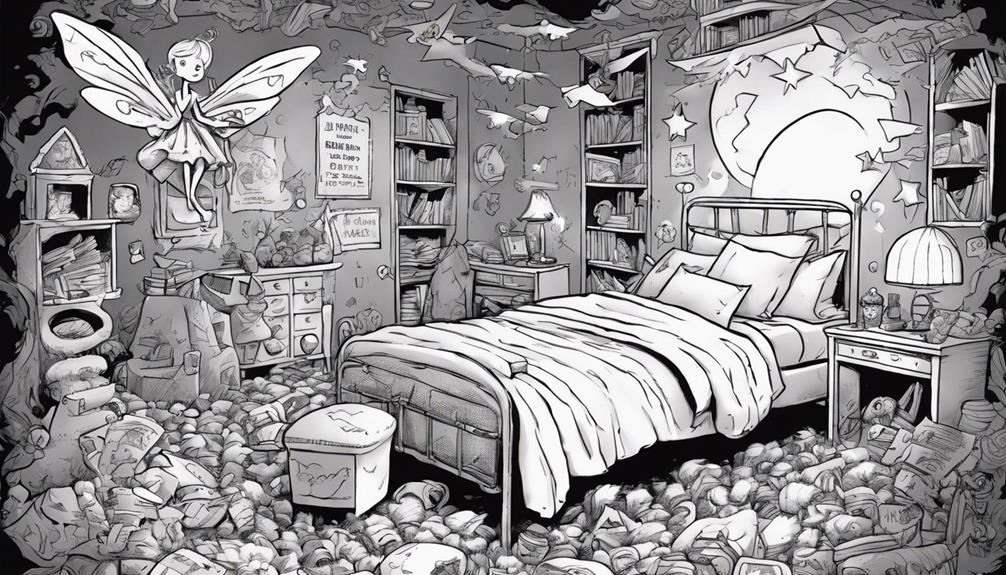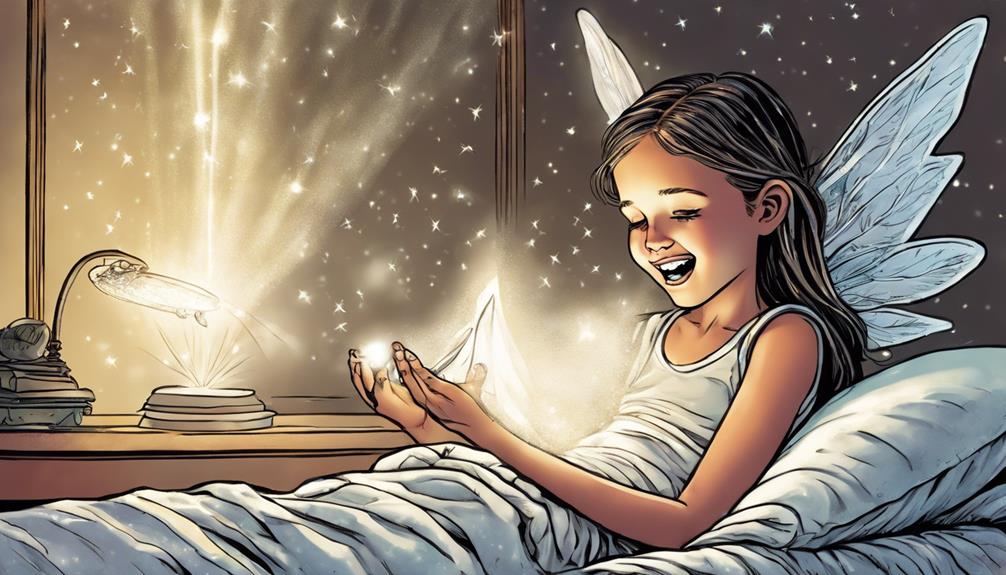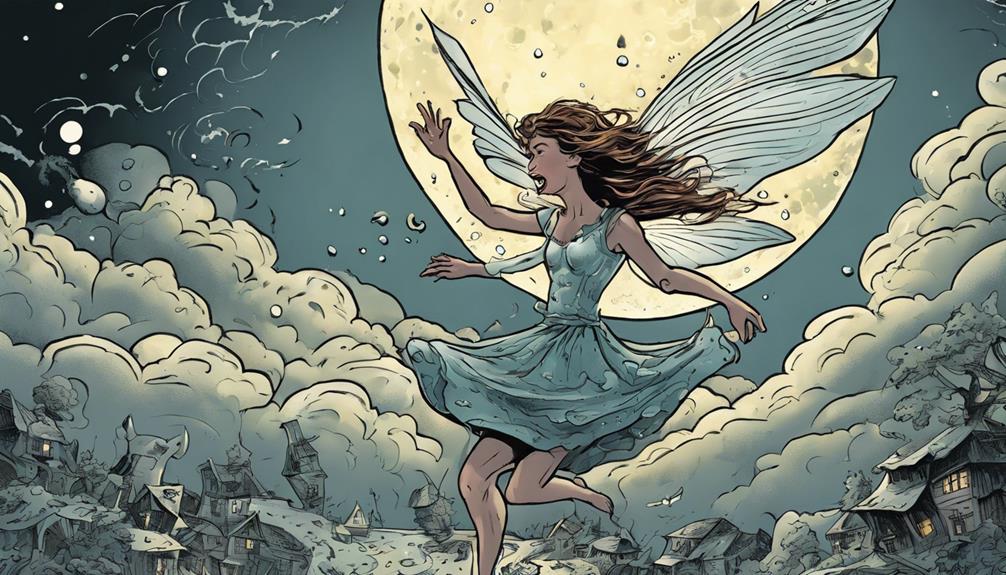The Tooth Fairy became a legend by transforming the experience of losing baby teeth into a magical celebration. Originating from 18th-century French folklore, her tale spread through English adaptations, gaining popularity after World War II. You connect with her through shared family rituals that create lasting memories and bond you during childhood milestones. The Tooth Fairy symbolizes innocence and growth, sparking wonder and excitement. Even today, she remains relevant, adapting to modern family life and promoting dental health. Discovering how these elements entwine helps you appreciate her enduring legacy even more.
Key Takeaways
- The Tooth Fairy originated from 18th-century French folklore, evolving into a beloved figure in English-speaking cultures by the 1920s.
- Post-World War II prosperity in the U.S. significantly increased the Tooth Fairy's popularity, establishing her as a cultural icon.
- The Tooth Fairy transforms losing baby teeth into a magical experience, symbolizing childhood innocence and encouraging family bonding through rituals.
- Modern adaptations and variations of the Tooth Fairy across cultures demonstrate her enduring legacy and relevance in childhood folklore globally.
Origins of the Tooth Fairy

The Tooth Fairy's roots can be traced back to 18th-century French folklore, where a mouse fairy cleverly hides a king's teeth under a pillow to rescue a queen. This tale, known as 'La Bonne Petite Souris,' introduces the idea that exchanging lost teeth for rewards can be magical. As the story gained traction, it morphed into the modern-day version of the Tooth Fairy, becoming a beloved figure in various cultures.
In the 1920s, the English translation of this folklore helped spread the Tooth Fairy myth, particularly in English-speaking countries. After World War II, the tradition flourished in the United States, as families, buoyed by economic prosperity, began rewarding their children for lost teeth. This not only encouraged children to embrace the sometimes intimidating experience of losing teeth but also created a fun and memorable ritual around it.
Cultural practices surrounding lost teeth often involved rituals like burying them or offering them to mice, believed to guarantee strong adult teeth. These traditions contributed to the development of the Tooth Fairy myth, solidifying her status as a cherished character in childhood experiences.
Evolution in Literature

Over the decades, the Tooth Fairy has found a charming place in children's literature, enchanting young imaginations and reinforcing the magic of losing a tooth. Introduced in English literature during the 1920s, the concept drew inspiration from the 18th-century French tale, 'La Bonne Petite Souris.' This connection laid the groundwork for the evolving legend of the Tooth.
Post-World War II, as American families enjoyed increased prosperity, the Tooth Fairy's popularity surged. Literature began to reflect this newfound enthusiasm, providing comfort to children as they navigated the change of losing teeth. Media representations in the 1950s, including films featuring good fairies, further solidified the Tooth Fairy's image, making her a household name.
The establishment of the Tooth Fairy Museum in Deerfield, Illinois, from 1993 to 2000 showcased this evolution in literature, celebrating her impact in art and storytelling.
Today, the combination of literature and media has established the Tooth Fairy as a beloved character in children's folklore. Through these stories, she continues to offer joy and comfort to children, ensuring her legacy endures for generations to come. With the proliferation of movies, TV shows, and books featuring the Tooth Fairy, her image and legend have only grown stronger. Children are fascinated by her incredible tooth fairy feats, such as effortlessly flying from house to house and leaving special surprises under their pillows. These stories and media portrayals have solidified the Tooth Fairy as a cherished figure in childhood.
Cultural Significance
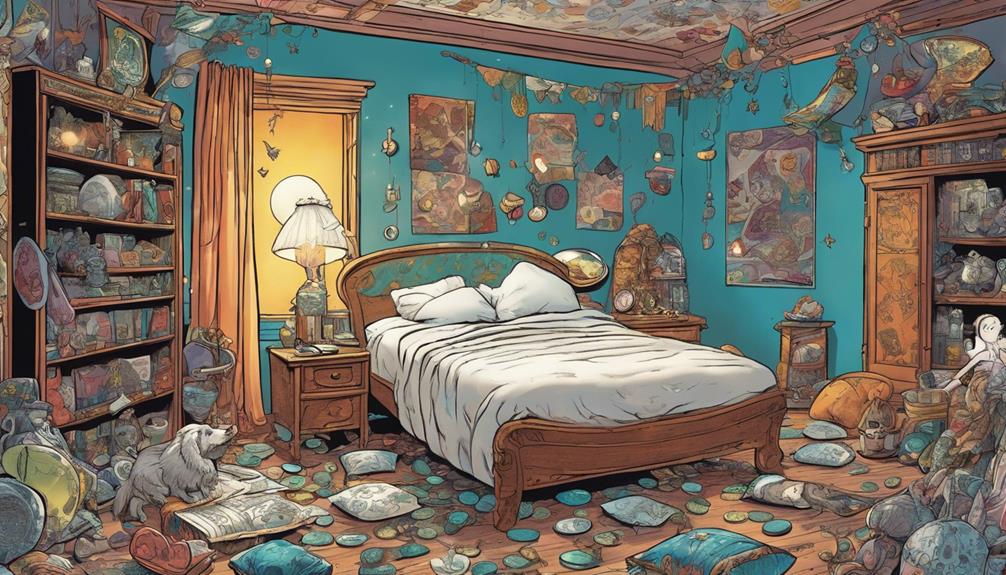
The Tooth Fairy transforms the often anxious experience of losing baby teeth into a magical moment that kids look forward to.
This figure not only represents childhood innocence but also marks a significant change toward maturity.
As you explore its cultural significance, you'll see how it captures the imagination and reinforces bravery in children worldwide.
Transformative Childhood Experience
Losing a baby tooth often turns into a magical milestone, thanks to the Tooth Fairy, who transforms a potentially anxious moment into a thrilling adventure for kids. This enchanting figure brings a sense of comfort and excitement, helping children embrace the changes of growing up.
| Aspect | Experience | Impact |
|---|---|---|
| Emotional Response | Wonder and curiosity | Reduces fear of loss |
| Family Bonding | Shared rituals | Creates lasting memories |
| Personal Growth | Reinforcement of bravery | Fosters resilience |
The Tooth Fairy's tradition encourages families to engage in fun rituals, strengthening bonds during this transformative phase of childhood. By rewarding kids for their lost teeth, she turns a simple act into a celebration of growth. This not only helps children feel accomplished but also instills confidence as they navigate their developmental milestones. Ultimately, the Tooth Fairy symbolizes a blend of comfort and excitement, ensuring that the journey of growing up is filled with wonder and joy.
Symbol of Innocence
A charming figure like the Tooth Fairy encapsulates childhood innocence, altering the loss of a tooth into a delightful rite of passage. This enchanting fairy serves as a symbol of childhood, providing comfort and excitement as children navigate this often anxious experience.
The Tooth Fairy phenomenon that we understand today reflects deep cultural significance, with roots in various traditions celebrating growth and change.
Here are a few reasons why the Tooth Fairy holds such a special place in our hearts:
- Nurturing aspect: It encourages bravery in children during a developmental milestone.
- Whimsical narrative: Engages children's imagination and sense of wonder.
- Cultural resonance: Represents shared experiences of growing up across diverse societies.
- Ritual significance: Signifies the shift from baby teeth to adult teeth, marking maturity.
Impact on Families

You create lasting memories when you embrace the Tooth Fairy tradition, turning a simple milestone into a cherished family event.
This shared experience strengthens your bond with your children, allowing for playful interactions that nurture their growth.
As you navigate these moments together, you foster a sense of joy and anticipation that makes losing a tooth feel special.
Creating Memorable Experiences
The Tooth Fairy tradition transforms the loss of baby teeth into a memorable family celebration, turning a potentially anxious moment into an exciting event. As your child loses their teeth, you can create lasting memories that they'll cherish for years to come. Engaging in this whimsical narrative not only sparks joy but also fosters a sense of creativity.
Here are some ways to enhance this experience:
- Create a special tooth pillow for your child to place their lost teeth.
- Leave a personalized note from the Tooth Fairy, adding a magical touch.
- Incorporate small rewards, like dental products or toys, to celebrate the milestone.
- Share stories or legends about the Tooth Fairy to ignite your child's imagination.
Strengthening Family Bonds
Engaging in the Tooth Fairy tradition not only creates memorable experiences but also strengthens family bonds through shared excitement and meaningful rituals. When your child loses a baby tooth, the anticipation of the Tooth Fairy's visit turns a simple event into a cherished family moment. You and your child can share in the excitement, discussing what might happen and how much the Tooth Fairy might leave as a reward.
This playful engagement encourages deeper conversations about growth and change, helping your child navigate the emotional aspects of losing teeth. The imaginative elements of the Tooth Fairy, from her whimsical nature to the magic of her nighttime visits, spark creativity and joy within your family.
Moreover, the tradition often includes storytelling and rituals that foster connection across generations. As you adapt and celebrate this custom, you're not just marking a milestone but also nurturing family ties that support your child's development.
The experience of losing baby teeth becomes a shared journey, reinforcing the bonds that hold your family together. Embracing the Tooth Fairy tradition is a fantastic way to create lasting memories while strengthening your family's love and unity.
Enduring Legacy
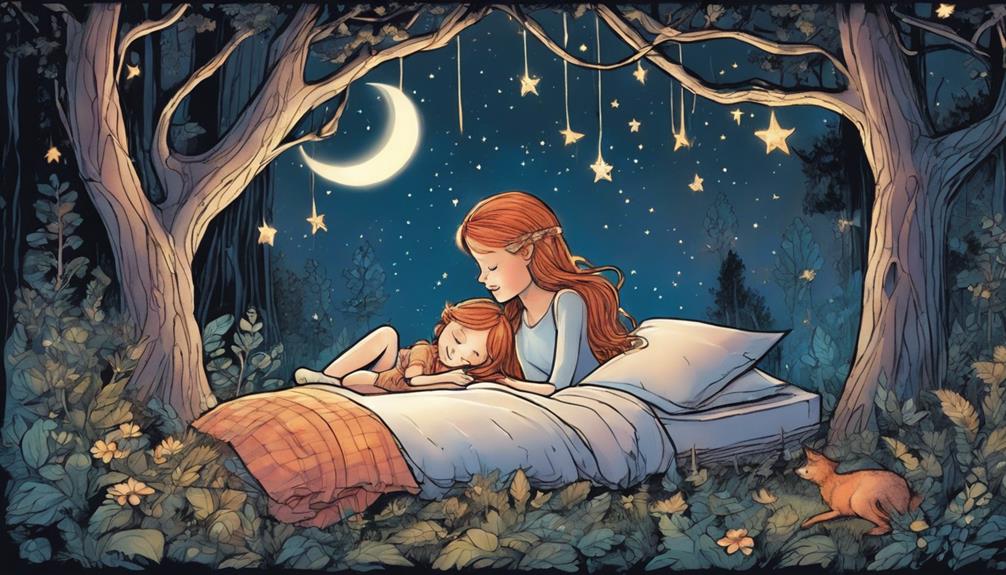
Throughout the years, the Tooth Fairy has become a beloved cultural icon, embodying childhood wonder and adapting to the ever-changing landscape of family life. This enchanting figure not only symbolizes childhood innocence but also weaves itself into the fabric of family traditions across the globe.
Here are some key aspects of the Tooth Fairy's enduring legacy:
- Cultural Icon: The Tooth Fairy has solidified her status through various forms of media, inspiring imagination and creativity.
- Childhood Excitement: Losing a tooth transforms from a potentially anxious event into a moment of excitement and anticipation.
- Financial Adaptation: With the average compensation for a lost tooth in the U.S. at $3.70, the tradition reflects modern economic conditions.
- International Adaptations: Different cultures have embraced the Tooth Fairy, creating diverse interpretations that maintain her relevance worldwide.
In this way, the Tooth Fairy not only remains a cherished part of childhood but also adapts to the needs and values of families across the world, preserving her legacy.
Modern Relevance
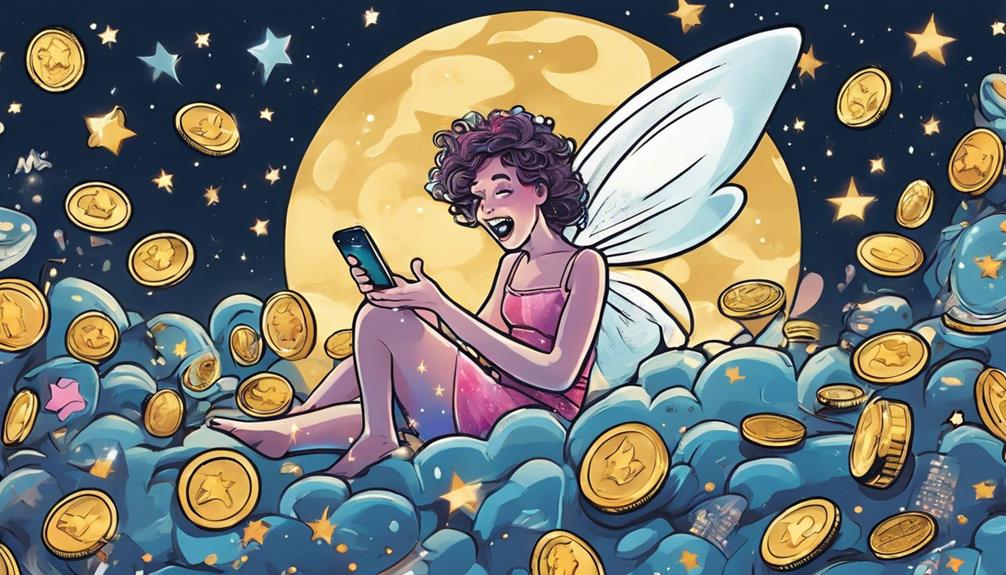
Tooth Fairy traditions thrive in modern families, proving her timeless appeal and adaptability in today's world. As you navigate your child's journey through losing baby teeth, the Tooth Fairy remains a beloved childhood tradition that brings excitement and joy. In fact, the average U.S. compensation for lost teeth has reached $3.70, showcasing how this practice continues to resonate with families.
Moreover, many dental practices cleverly incorporate Tooth Fairy themes in their marketing, reinforcing her role in promoting dental health and hygiene among children. The American Dental Association even supports the Tooth Fairy's legacy by hosting initiatives like the 'Ask the Tooth Fairy' advice column, bridging the gap between fun and education in dental care.
The concept of the Tooth Fairy has also expanded globally, adapting to local customs while maintaining its core theme of rewarding children. Creative adaptations, such as the Tooth Fairy Hotline during COVID lockdowns, highlight her flexibility and ability to provide comfort and joy during challenging times.
Frequently Asked Questions
How Did the Legend of the Tooth Fairy Start?
The legend of the Tooth Fairy started with ancient traditions of tooth disposal, evolving from tales like 'La Bonne Petite Souris.' Over time, it transformed into a cherished symbol of childhood imagination and innocence.
What Is the Tooth Fairy Urban Legend?
The Tooth Fairy urban legend involves a mystical figure who exchanges lost teeth for money or gifts, creating excitement for children. You might find varying cultural interpretations, but the essence remains a magical childhood tradition.
What Is the Dark Story Behind the Tooth Fairy?
You might think the Tooth Fairy's sweet, but her origins disclose a darker tale. From a vengeful mouse defeating a king to eerie rituals, the story reveals themes of power, loss, and transformation lurking beneath the surface.
What's the Point of the Tooth Fairy?
The Tooth Fairy's point is to transform losing a tooth into a magical experience. You create excitement, reward bravery, and foster family traditions, helping your child navigate childhood's milestones with joy and imagination.
Conclusion
In celebrating the Tooth Fairy, you embrace a timeless tradition, you nurture childhood wonder, and you create lasting memories.
This enchanting figure weaves connections across generations, uniting families in joy and anticipation.
As you pass down this whimsical tale, you keep the magic alive, inspire imagination, and foster a sense of adventure.
The Tooth Fairy isn't just about lost teeth; she's a symbol of hope, belief, and the beauty of growing up.
Embrace her legacy and let it shine!

